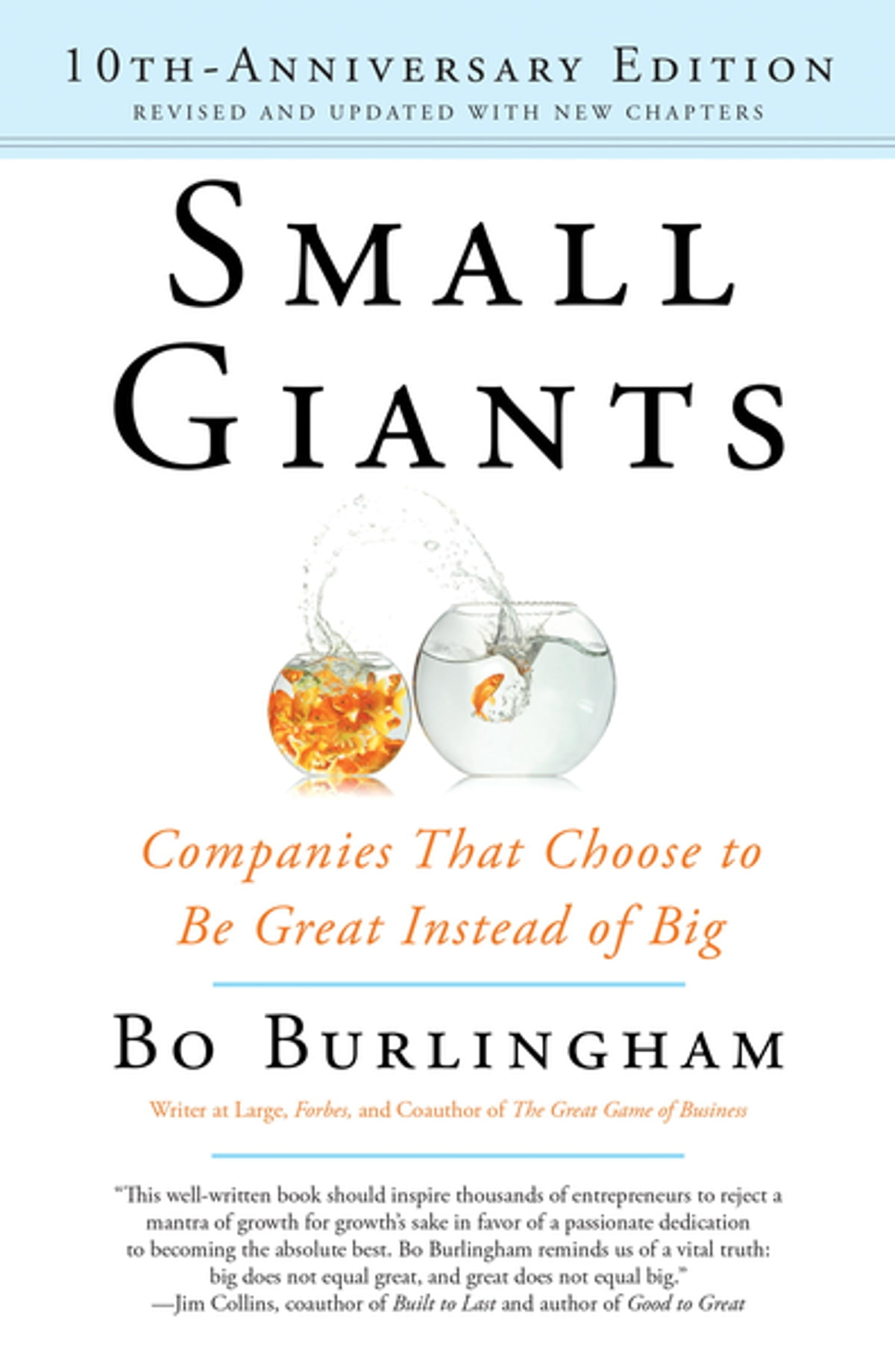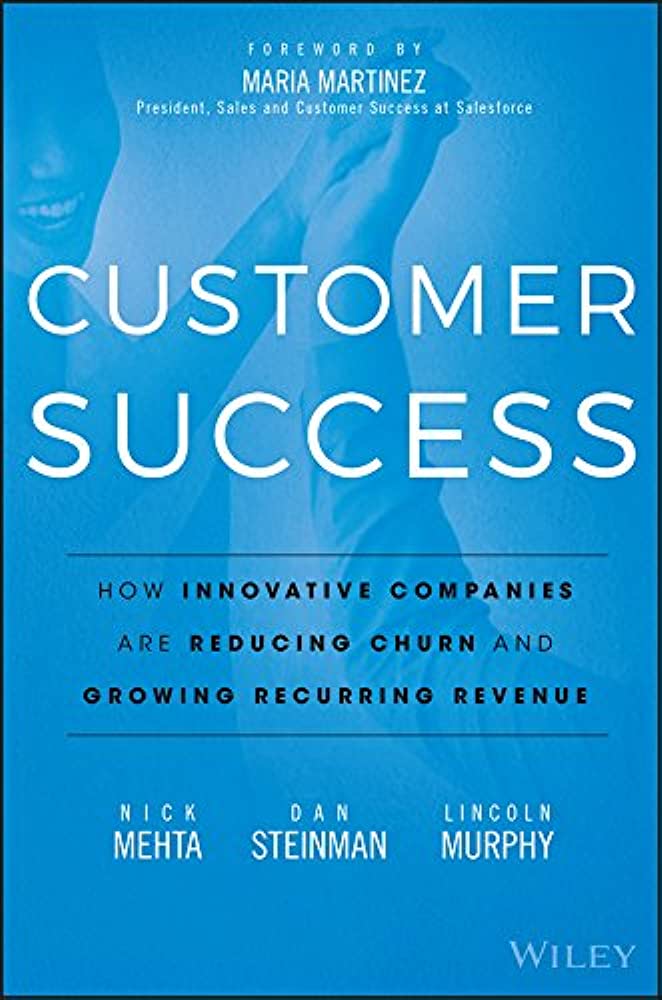Small Giants
by Bo Burlingham
- Business
- Ashto =
- Jonesy =

What You Will Learn from Small Giants
This week, Ashto and Jonesy learn how fourteen remarkable companies maintain a successful, profitable business by redefining the conventional business strategies. In Small Giants, veteran journalist Bo Burlingham introduces alternative approaches these companies have taken to stay powerful. By rejecting the pressure to grow revenue, they focus on other fulfilling business goals, including creating a great place to work, providing excellent customer service, or contributing to their local communities. From Small Giants, we can learn how to redefine the meaning of success and understand the benefits we can reap from staying true to our core values.
Companies that Choose to be Great Instead of Big
When we talk about companies, we generally group them into three buckets: Big, Getting Big, and Small. However, in Small Giants, we get to discover companies that don’t fit into those traditional categories. Most of these companies are growing in unconventional ways – several have chosen to stay stagnant while others are actively shrinking their operations. Aside from that, these companies share a couple of characteristics.
To begin with, they are utterly determined to be the best at what they do. They all have had the opportunity to raise a lot of capital, grow very fast, do mergers and acquisitions, expand geographically, and generally follow the well-worn route of other successful companies. However, they have chosen to pursue other goals that they consider more important than getting as big as possible as fast as possible.
Our media mainly focuses on traditionally big companies. For example, books like Good to Great and In Search of Excellence understandably focus on big public companies (or companies that aspire to be big and public) because the data for those types of companies are more accessible. Because of this, we have missed a very viable path.
Falsehood #1 – Businesses must grow or die
Most public companies need to show steady increases in sales, profits, market share and EBITDA to keep the shareholders happy. It’s a common belief that investors would sell away their shares in a company when they see any sign of decline or stagnancy. However, there are companies that are able to maintain their operation without significant growth.
Falsehood #2 – A business needs to be #1 or #2 in its niche
An idea that was promoted by the former CEO of General Electric Jack Welch. However, it’s difficult to see how this rule is applicable for the vast majority of companies that are neither large nor publicly owned.
Falsehood #3 – The concept of “getting to the next level”
When it comes to businesses, the phrase “next level” always implicates more sales and revenue. The idea is that you get to the next level when you can handle the managerial demands of operating a larger business because the “next level” implies that bigger is better. However, this is not true for the majority of companies and business owners.
Falsehood #4 – Confusion around “shareholder value”
For public companies, shareholder value refers to the price of the stock that represents the net present value of future cash flows (dividends). We assume that all businesses should operate this way – if they take an investment of time/money/effort from someone, they get back what they want in return. But, that assumption misses an obvious truth – what’s in the interest of shareholders depends on who the shareholders are.
Who’s in charge here
Most business startups go through a rollercoaster ride. Along the way, successful companies go through the full range of pressures that often cause entrepreneurs to lose control of their companies at an early stage. It’s far more difficult to keep ownership and control inside a privately owned business as it grows. Unless you succeed in retaining control, you will wind up with a company driven not by your own aspirations but rather by the need to meet growth targets set by external stakeholders.
Forces You Have to Battle
Competitors
The pressure from big competitors, or the fear of new competitors chasing you down, can be more pressure to grow. If you become mildly successful, eventually someone else will catch on to what you’re doing. if they want a slice of the action too, you will think that you need to grow in order to build that moat or to outrun them so they can’t catch you and corner in on your niche/opportunity.
Suppliers
They have a vested interest in seeing your company grow. The more you sell, the more they sell to you as well.
Psychological Pressures
If there is an opportunity to gain more power and status for your company, you will probably be tempted to take it. However, growth for your company will bring forth changes that you may not like. It takes a lot of strength to stay stagnant, or to actively choose to say no to opportunities for growth. You need to be intentional about why you want to grow or not grow, rather than being driven by your ego. The idea that “bigger is better” has pervaded our culture so much that most people assume all entrepreneurs want to capitalise on every business opportunity and grow their companies as fast as they can. That widespread assumption becomes a big pressure to grow, especially when personal pride, status, and prestige are tied to the perceived size of the company.
Growth in Leaps
The other problem is, that you can’t really grow big businesses little by little. The giant leaps mean either having a big gap now between demand and supply or taking on a heap of new money. The same concept goes for human resources. You can’t just get your team to work 2% or 3% harder to grow the company. You will need to hire a new full-time employee, pay a decent salary, and spend 6 to 12 months training them.
Forces to Sell
Companies that can’t finance their own growth are often forced to sell parts of their company. That’s how many people end up losing their company–simply because they become too successful. To be sure, many people don’t lose their company but they lose a lot of other things instead. Taking on debt means added pressure to grow in order to service the debt, and selling to other investors means you lose a significant portion of your independence.
As a result, it becomes much more difficult to make the choices that the Small Giants successful companies have made. It’s not impossible to find investors that will allow you to grow (or not grow) as you like, but there are always bargains or trade-offs involved. External stakeholder must buy into your business vision, which will only happen if they get what they want out of the business deal as well.
The neglected path highlighted in Small Giants
“Grow or die” is a false dichotomy – you can actively choose to not grow and still maintain a successful, profitable business. Bigger isn’t always better because sometimes the gains you get from a bigger business are more than offset by the losses of independence. Companies mentioned in Small Giants have learned that achieving these goals often means detaching themselves from external investors and avoiding rapid growth. They have chosen to stay private and closely held, and place other goals ahead of growth. In return, they get two important things: control and time. The combination of control plus time equals freedom, or more precisely, the opportunity for freedom.








